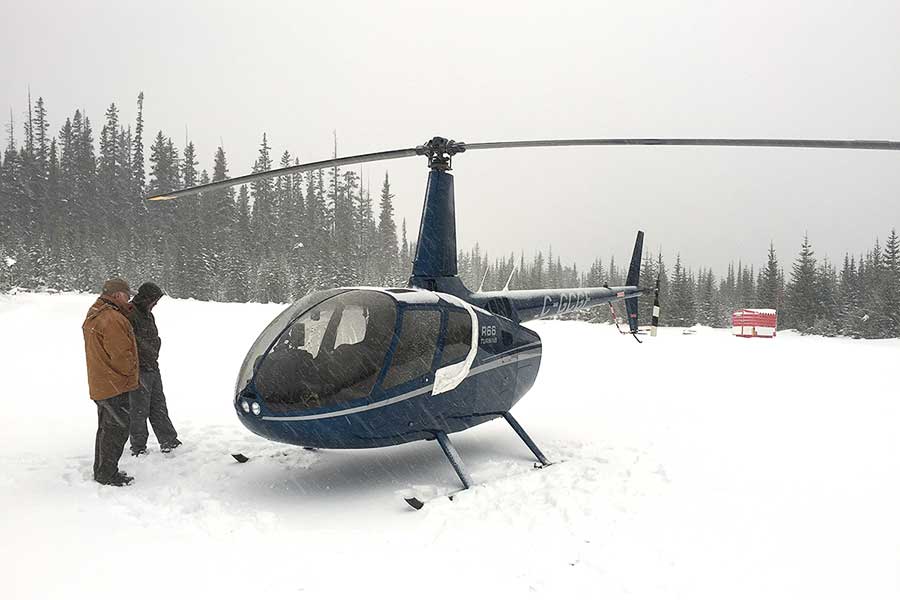Why would you want to fly in snow? Well, in some parts of North America – Canada, for instance – there’s quite a few days in winter when it does snow. However, for a helicopter to be allowed to fly legally in snow conditions, it has to pass tests. And Robinson’s turbine powered R66 has just done that.
It hasn’t been simple to arrange. For a start, you need falling snow. So when Robinson’s Canadian dealer Eric Gould of Aerial Recon called the Californian company to say the forecast was perfect at Spray Lakes, Robinson moved quickly.
The test was conducted during a heavy snow storm with low visibility at freezing temperatures, conditions that have been shown to produce worst-case snow accumulation at the helicopter turbine engine intakes.
The test consists of a 100% engine ground run for 20 minutes, IGE hover for 5 minutes, and 60 minutes of cruise flight. Performance was monitored using pressure instruments and a live video feed from a camera mounted near the engine air filter.
The test requires that snow build-up not block the engine air intake or adversely affect engine operation. Despite the extreme weather conditions, no snow build-up occurred in the engine intake area and no decrease in engine performance was detected.
The test pass means a limitation on flying in falling or blowing snow can now be removed from the Pilot’s Operating Handbook.
robinsonhelicopter.com












